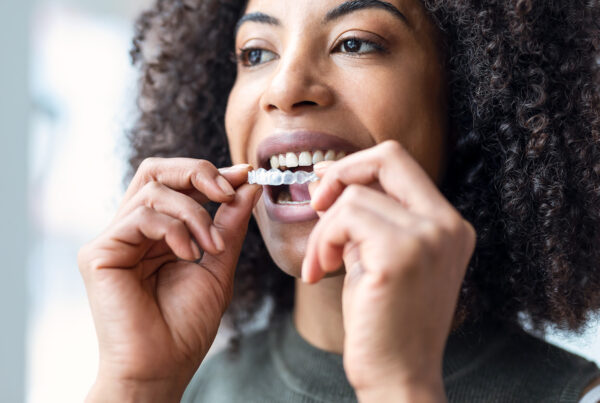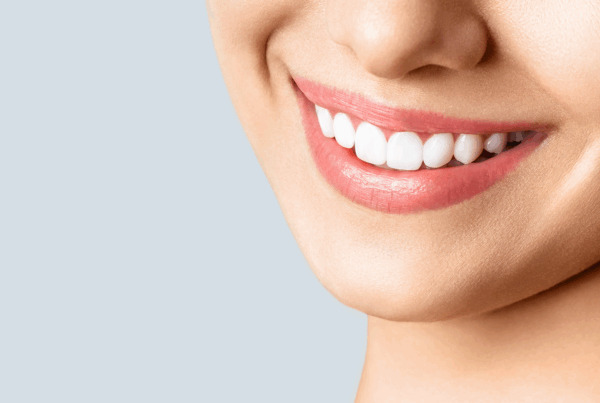Orthodontics is more than just straightening teeth; it’s about creating beautiful, healthy smiles that can boost confidence and improve oral health. At our dental office, we offer a variety of orthodontic treatments tailored to meet the unique needs of each patient. In this blog, we’ll explore the different types of orthodontic appliances, the various types of braces, and help you determine which kind of braces might be best for you.
 What are the Different Types of Orthodontic Appliances?
What are the Different Types of Orthodontic Appliances?
Orthodontic appliances come in many forms, each designed to address specific dental issues and enhance oral health. These appliances can correct misalignments, manage the spacing of teeth, and ensure a functional bite. Understanding the variety of orthodontic appliances available can help you and your orthodontist choose the best treatment for your needs. Here are some of the most common types:
Braces
The most well-known orthodontic appliance, braces consist of brackets, wires, and bands that work together to move teeth into the desired position. Braces are highly effective in treating a wide range of dental issues, from minor misalignments to complex bite problems. They are typically worn for one to three years, depending on the severity of the condition.
Aligners
Clear aligners like Invisalign are a popular alternative to traditional braces. These removable trays are custom-made to fit your teeth and gradually shift them into the correct position without the need for metal wires or brackets. Aligners are nearly invisible, making them an attractive option for adults and teens concerned about the aesthetics of orthodontic treatment. They are also removable, allowing for easier cleaning and maintenance of oral hygiene.
Retainers
After braces or aligners have done their job, retainers are used to keep teeth in their new position. Retainers can be either removable or fixed. Removable retainers are made of acrylic and wire and are worn as directed by your orthodontist, usually at night. Fixed retainers consist of a thin wire bonded to the back of the teeth, providing a long-term solution to prevent teeth from shifting back to their original position.
Palatal Expanders
Palatal expanders are used to widen the upper jaw so that the upper and lower teeth fit together better. This appliance is often recommended for children whose jaws are still growing. It works by applying gentle pressure on the upper molars each time an adjustment is made. Over time, this pressure causes the bone to grow and the upper jaw to widen, creating more space for teeth alignment.
Headgear
Sometimes used in conjunction with braces, headgear helps to correct severe bite problems, such as overbites or underbites. Headgear exerts pressure on the upper teeth and jaw, guiding them into better alignment. This appliance is typically worn for a specific number of hours each day and is most effective when followed according to the orthodontist’s instructions.
Space Maintainers
Space maintainers are devices used to keep the space open for permanent teeth to come in after a baby tooth has been lost prematurely. This is particularly important in preventing neighboring teeth from shifting into the empty space, which can cause crowding and alignment issues. Space maintainers can be either removable or fixed, depending on the child’s needs and the specific situation.
Additional Orthodontic Appliances
Orthodontics includes other specialized appliances designed for unique dental conditions:
- Thumb Sucking Appliances: These devices help discourage thumb or finger sucking habits in young children, which can affect dental development.
- Lip Bumpers: Used to create space between the teeth and lips, reducing pressure on the front teeth and allowing for better alignment.
- Forsus Appliances: These are spring-like devices used to correct overbites by pushing the lower jaw forward and the upper molars backward.
Each of these appliances plays a crucial role in the comprehensive approach to orthodontic treatment, ensuring that patients achieve optimal results tailored to their specific dental needs.
 Are There Different Types of Braces?
Are There Different Types of Braces?
Yes, there are several types of braces, each with its own unique advantages and disadvantages. Understanding these options can help you make an informed decision about which type of braces is best for your orthodontic needs. Here are the main types of braces:
Metal Braces
Metal braces are the most common type of braces. Metal braces are highly effective for treating a wide range of dental issues, from minor alignment problems to complex bite corrections. They are typically the most affordable option and can be customized with colored bands for a more personalized look. However, they are the most noticeable type of braces.
Ceramic Braces
Ceramic braces function similarly to metal braces but are made of clear or tooth-colored ceramic material that blends in with the natural color of your teeth. Ceramic braces are less visible, which can be a significant advantage for adults and teens who are concerned about the aesthetics of wearing braces. However, ceramic braces can be more fragile and can stain if not properly cared for, making them more demanding in terms of maintenance.
Lingual Braces
Lingual braces are attached to the back (lingual side) of the teeth, making them virtually invisible from the front. This makes them a highly discreet option for orthodontic treatment. Each set of lingual braces is custom-made to fit the contour of your teeth. While they offer the aesthetic advantage of being hidden from view, lingual braces can be more difficult to clean and may cause some initial discomfort or speech difficulties as the tongue adjusts to their presence. They also tend to be more expensive due to their customized nature and the additional skill required for their placement.
Self-Ligating Braces
Self-ligating braces are similar to traditional metal braces but use a specialized clip instead of elastic bands to hold the archwire in place. This clip helps reduce friction and allows for quicker adjustments, potentially shortening the overall treatment time. They can be made from metal or ceramic, offering both visibility and aesthetic options. They also tend to be easier to clean than traditional braces because they have fewer places for plaque and food to get trapped.
 Which Kind of Braces are Best?
Which Kind of Braces are Best?
The best type of braces for you will depend on your specific dental needs, lifestyle, and preferences. Here are a few considerations:
- Aesthetic Preferences: If you are concerned about the appearance of braces, ceramic braces or clear aligners may be the best choice.
- Budget: Metal braces are typically the most affordable option.
- Complexity of Treatment: Some dental issues may require the more precise adjustments that traditional metal braces provide.
- Comfort and Convenience: Clear aligners are removable and generally more comfortable, but they require discipline to wear them as prescribed.
Consulting with an orthodontist is the best way to determine which type of braces will suit your needs. They will consider the severity of your dental issues, your aesthetic preferences, and your budget to recommend the most suitable option.
 Conclusion
Conclusion
Orthodontic treatment is a significant investment in your dental health and overall well-being. Whether you need traditional braces, clear aligners, or another type of orthodontic appliance, our dental office is here to help you achieve the smile of your dreams. Don’t wait to start your journey towards better oral health. Schedule an appointment with us today and take the first step toward a healthier, more confident smile.







